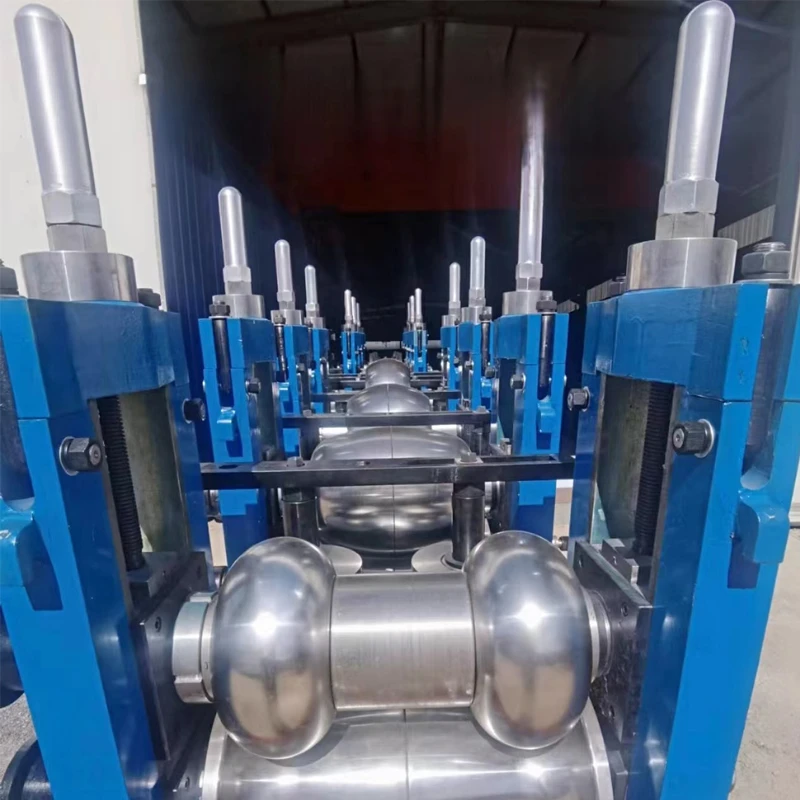Understanding the Functionality of Decoiler Machines in Industrial Applications
Understanding the Working of a Decoiler Machine
In various industries, particularly those involved in metal fabrication, the handling of rolled sheets of material is a critical aspect of production. A decoiler machine plays a crucial role in this process by unwinding these rolled materials into manageable sheets, making it an indispensable piece of equipment in manufacturing settings. Understanding how a decoiler machine works can help businesses optimize their production processes and improve overall efficiency.
What is a Decoiler Machine?
A decoiler machine is designed to unwind coils of metal or other materials so that they can be fed into various machinery for further processing. The decoiler functions by holding the coil securely while rotating to release the material. This allows for a continuous feed of material into downstream processes such as cutting, stamping, or shaping.
Key Components of a Decoiler Machine
To grasp how a decoiler machine operates, it's important to familiarize oneself with its key components
1. Coil Holder This part secures the coil in place. It maintains the integrity of the coil during the unwinding process, preventing it from shifting or falling.
2. Unwinding Mechanism Typically powered by an electric motor, this mechanism is responsible for rotating the coil to allow for the unwinding of the material. It can be configured to adjust the speed and tension according to the material characteristics.
3. Feed Table Positioned directly beneath the unwinding mechanism, the feed table guides the unwound material to the next stage of production. It often features rollers or guides to ensure smooth movement.
4. Control Panel Modern decoiler machines come equipped with a digital control panel that allows operators to monitor and adjust settings such as speed, tension, and feed rate. This enhances the overall control over the production process.
The Working Process
The operation of a decoiler machine can be broken down into several key steps
decoiler machine working

1. Loading the Coil The process begins with loading the coil onto the coil holder. This is typically done manually or with the help of a hoist, ensuring that the coil is properly positioned for unwinding.
2. Setting Parameters Once the coil is in place, operators set the necessary parameters on the control panel. This includes adjusting the unwinding speed and tension according to the material being processed to prevent damage.
3. Unwinding the Material The motorized unwinding mechanism engages, causing the coil to rotate and release the material. As the coil unwinds, the feed table guides the material toward the next piece of machinery, such as a shear or stamping press.
4. Continuous Feeding The decoiler ensures that the material is fed continuously and smoothly, minimizing downtime and enhancing productivity. If the decoiler encounters resistance or jamming, safety features are in place to stop the machine and alert the operator.
5. Integration with Other Equipment A decoiler machine is typically part of a larger production line, often working in conjunction with other equipment like roll formers and punch machines. This integration is crucial for maintaining an uninterrupted workflow.
Benefits of Using a Decoiler Machine
The advantages of using a decoiler machine are numerous
- Efficiency Decoilers streamline the process of unwinding materials, drastically reducing the labor required for manual handling. - Consistency Automated unwinding ensures a consistent feed rate, leading to uniformity in the final product.
- Safety By mechanizing the unwinding process, the risk of injury associated with manual manipulation is significantly reduced.
- Versatility Modern decoiler machines are designed to accommodate various material types and coil sizes, making them versatile tools in manufacturing operations.
Conclusion
In summary, a decoiler machine serves as a vital piece of equipment in the manufacturing process, particularly in industries dealing with rolled materials. Its efficient operation, consisting of loading, unwinding, and feeding, enhances productivity and safety on the production line. As technology continues to evolve, so too do decoiler machines, with advancements that further improve their functionality and integration within manufacturing systems. Understanding how these machines work not only helps in maximizing their potential but also promotes a more streamlined approach to material handling in industrial applications.
-
High Frequency Straight Seam Welded Pipe Production Line-BzZhou Xinghua Machinery Equipment Manufacturing Co., LTD.|Precision Welding, High EfficiencyNewsJul.30,2025
-
High Frequency Straight Seam Welded Pipe Production Line|BzZhou Xinghua|Precision Welding&EfficiencyNewsJul.30,2025
-
High Frequency Straight Seam Welded Pipe Production Line - BzZhou Xinghua|Precision Engineering&EfficiencyNewsJul.30,2025
-
High-Frequency Straight Seam Welded Pipe Production Line-BzZhou Xinghua Machinery Equipment Manufacturing Co., LTD.NewsJul.30,2025
-
High-Frequency Straight Seam Welded Pipe Production Line-BzZhou Xinghua Machinery Equipment Manufacturing Co., LTD.|Precision Manufacturing, High EfficiencyNewsJul.30,2025
-
High Frequency Straight Seam Welded Pipe Production Line-BzZhou Xinghua Machinery Equipment Manufacturing Co., LTD.|Precision Steel Pipe Manufacturing&Industrial EfficiencyNewsJul.29,2025


